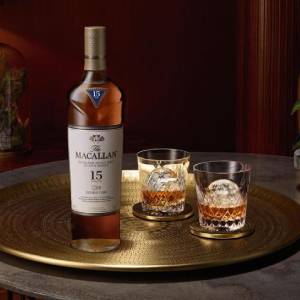Understanding the difference between cask sizes can be important. Whether you're a drinker, looking to understand the influence of wood on the whisky in your glass or investing and need to know the size of the barrel the whisky is stored in. If you want to know your blood-tubs from your butts, read on...
A Guide to Whisky Cask Sizes
Blood-tub
Blood-tub casks, the smallest in the lineup, hold between 30 and 40 liters. Rarely seen in commercial use, they are ideal for private collections due to their manageable size for individual ownership. However, the limited volume leads to a high intensity of wood-spirit interaction, which restricts the duration of maturation.
Octave
Octaves are compact 50-liter casks, about a quarter the size of a standard American barrel. They facilitate a strong interaction between the wood and the spirit. Primarily utilized for brief maturation phases and finishing processes, octaves are a distinctive choice in spirit production.
Quarter Cask
Quarter casks, sized at one-fourth of a butt, are small yet allow for more extended maturation than their smaller counterparts due to less intensive wood interaction. They strike a balance between size and maturation quality.
American Standard Barrel
The American standard barrel, commonly 200 liters in capacity, is predominantly used for aging bourbon. Typically crafted from American white oak, these barrels are a staple in bourbon maturation.
Hogshead
Hogsheads, ranging from 230 to 250 liters, were historically used for wine and ale but are now a popular choice for whisky maturation. Their larger size results in less wood contact, enabling longer aging periods.
Port Pipe
Port pipes, starting at 350 liters and often similar in size to butts, are among the largest casks used. Originating from the Portuguese term 'pipa' for cask, they are traditionally used for aging port but have increasingly been adopted for whisky in recent times.
Butt
Butts are substantial 500-liter casks, famously utilized for sherry maturation. They are a favorite among whisky makers for their large size and are often the largest casks found in dunnage warehouses.
Puncheon
Puncheons vary greatly in size, typically between 500 and 700 liters. Their dimensions depend on the intended spirit for maturation, with sherry puncheons being larger than those for rum. Occasionally, the term "puncheon" is also used for unique casks crafted from leftover barrel staves, leading to a diverse range of appearances and sizes.
Tun
Tuns, with capacities between 1,000 to 2,000 liters, are among the largest for spirit aging. Their immense size allows for a gradual maturation process, ideal for spirits needing extended aging. These casks are more common in larger distilleries due to their significant storage demands.
| Cask Type | Size (Litres) | Size (US Gallons) |
|---|---|---|
| Blood-tub | 30 - 40 litres | 8 - 11 gallons |
| Octave | 50 litres | 14 gallons |
| Quarter casks | 125 litres | 33 gallons |
| Barrel (USA standard) | 200 litres | 53 gallons |
| Hogshead | 230 - 250 litres | 61 - 66 gallons |
| Port Pipe | Over 350 litres | Over 92 gallons |
| Butt | 500 litres | 132 gallons |
| Puncheon | 500 - 700 litres | 132 - 185 gallons |
| Tun | 982 litres | 259 gallons |
Whisky Casks and Flavour
Understanding Whisky Cask Types
Oak is the cornerstone of whisky aging, and understanding the different casks used is crucial. Each type imparts distinct characteristics to the whisky, influencing color, taste, and aroma.
American Oak Barrels
American oak barrels, primarily used for bourbon, are known for their sweet, vanilla, and caramel notes. Their internal charring releases compounds that give whisky a smooth, mellow character.
Sherry Oak
Whiskies aged in Sherry oak casks are known for their deep, fruity richness. Expect notes of dark fruits like raisins, figs, and dates. There’s also a delightful presence of nutty flavors, ranging from almonds to walnuts, adding to the cask's complexity.
European Oak Casks
European oak casks, often used for sherry or wine, add rich, dried fruit and spicy notes. These casks impart a complexity and depth, making the whisky robust and full-bodied.
Exotic Wood Casks
Exploring exotic wood casks, such as Mizunara oak from Japan, introduces unique flavors like coconut, spice, and incense. These casks are rare but offer a distinctive, luxurious experience.
Port and Wine Casks
Port and wine casks infuse whisky with fruity, sweet, and tart flavors. They add a vibrant, rich hue and a smooth, rounded taste, often with a hint of berries or citrus.
Rum Casks
Rum casks lend a tropical, sugary sweetness to whisky. They contribute flavors of molasses, banana, and coconut, offering a sunny, warm finish.























